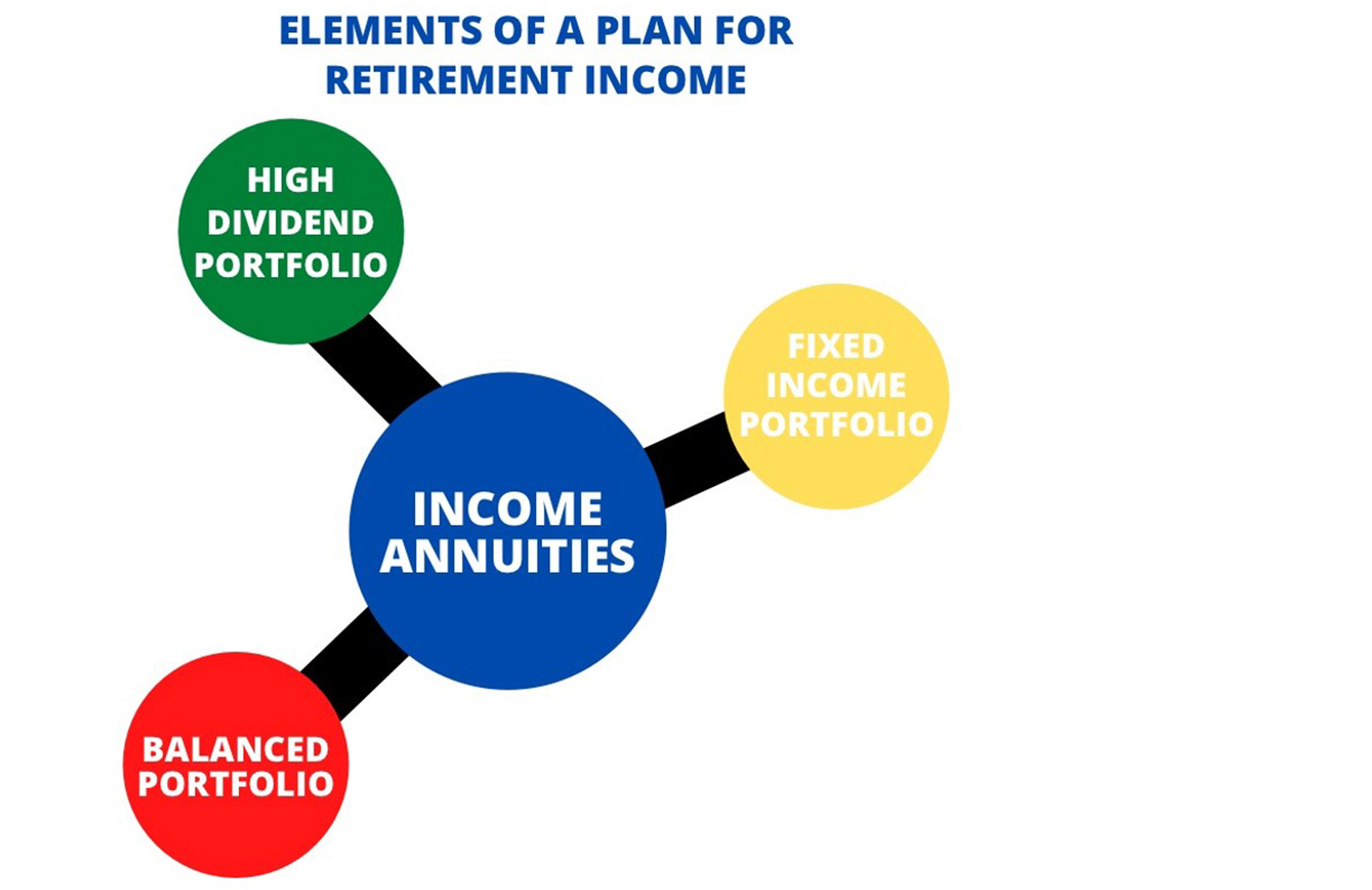For Sustainable Retirement Income, You Need These Five Building Blocks
Combining elements that you understand is the smartest way to create a secure retirement.


Sometimes we have all the elements for a great retirement, but until we put them together the right way, we don’t get the result we want.
I call it the H2O problem. We have plenty of oxygen in the atmosphere. Likewise, hydrogen. It seems simple, but until two atoms of hydrogen combine with one of oxygen, we will never get water.
When planning for retirement income, it is risky to wait for the right combination of elements to join on their own. They don’t just fall into place; you have to know what each can do and put them together in a way that produces a whole greater than the sum of the parts.

Sign up for Kiplinger’s Free E-Newsletters
Profit and prosper with the best of expert advice on investing, taxes, retirement, personal finance and more - straight to your e-mail.
Profit and prosper with the best of expert advice - straight to your e-mail.
You may sit with financial advisers who can describe all the elements required for a successful retirement, but they might not offer all of those elements in their own retirement planning practice. Maybe it’s because of regulatory or business model considerations. And even when all these elements are available, the adviser may not know how to assemble them.
It’s not easy. Retirement income requires consideration of many more elements than just the two needed to create water (H2O), and many more combinations — like 50 trillion. Literally.
The requirements of a plan for retirement income
As a starting point, your plan should be about income: starting income to meet your current needs, increasing income to help offset inflation, lifetime income so you don’t run out, and less volatile income so you feel secure.
But most investors have additional concerns, such as a legacy they want to pass on to kids and grandkids, and availability of liquid funds in case of unexpected needs or emergencies. They might also want the plan to be convenient and easy to manage, with income payments made on a regular monthly basis, and flexible so that the plan can adjust to changing circumstances or economic conditions.
And the plan elements should be easily understood, offered by highly rated companies, low-cost and tax-efficient. Bottom line: Focus on the plan and make the elements as time-tested as possible.
Identify the elements of a successful plan for retirement income
Just like in chemistry class when reviewing the periodic table, go to the list of financial products available to investors like you and select those that make sense. Or ask your advisers for their list.
Here is our list of retirement plan elements (including the most likely savings source):
- PD: Portfolio of high-dividend stocks (invested from personal savings)
- IAN: Income annuity with guaranteed payments starting now (invested from personal savings whenever possible)
- PF: Portfolio of fixed income bonds (invested from personal savings)
- IAF: Income annuity with guaranteed payments starting at future dates you select (invested from both personal savings and rollover IRA)
- PB: Portfolio balanced between growth stocks and fixed income securities (invested from rollover IRA as source of withdrawals)
Here’s a picture of how the elements might look if you were creating a retirement molecule.

Putting the elements together
As a compound your plan might look like PD3IAN4PF1IAF2PB4. However, and this is the tricky part, unlike this jumble of elements, the compound you’ve engineered needs to be designed to be able to change form over time and continue for your entire lifetime.
The bar chart below demonstrates the income these elements produce when combined using the Go2Income planning algorithm. Note how each element contributes different amounts at different times over your lifetime. Of course, the portfolios will contribute income based on the planning assumptions, while the annuity payments are guaranteed* and serve as the plan’s foundation.

Results of your plan
To evaluate your plan, see if it meets your income requirements: starting income to meet your current needs, increasing income to help offset inflation, lifetime income so you don’t run out, and less volatile income so you feel secure. And also look at your objectives for legacy and liquidity.
Unlike H2O, there are virtually an infinite set of possible combinations to match your objectives and personal circumstances.
In the end, creating a successful plan will allow you to:
- Use basic elements in the most effective and efficient way
- Create a plan that combines the right mix of elements
- Personalize the combination to meet your objectives
If you are interested in working on your own “chemistry” project, visit Income Allocation Planning at Go2Income. We will ask a few easy questions so you can design a plan that meets your objectives.
* Guarantees are subject to the claims-paying ability of the insurer.
Related Content
Get Kiplinger Today newsletter — free
Profit and prosper with the best of Kiplinger's advice on investing, taxes, retirement, personal finance and much more. Delivered daily. Enter your email in the box and click Sign Me Up.

Jerry Golden is the founder and CEO of Golden Retirement Advisors Inc. He specializes in helping consumers create retirement plans that provide income that cannot be outlived. Find out more at Go2income.com, where consumers can explore all types of income annuity options, anonymously and at no cost.
-
 Stock Market Today: Stocks Gain on Tech, Auto Tariff Talk
Stock Market Today: Stocks Gain on Tech, Auto Tariff TalkThe Trump administration said late Friday that it will temporarily halt tariffs on some Chinese tech imports.
By Karee Venema
-
 Sam's Club Plans Aggressive Expansion: Discover Its New Locations
Sam's Club Plans Aggressive Expansion: Discover Its New LocationsSam's Club expansion plans will open up to 15 new stores each year. Learn where they plan to open in 2025.
By Sean Jackson
-
 How Baby Boomers and Gen Xers Are Redefining Retirement Living
How Baby Boomers and Gen Xers Are Redefining Retirement LivingBoth generations need to embrace change and leverage real estate as a dynamic asset in their retirement planning. Here's how financial advisers can help, too.
By David Conti, CPRC
-
 How Good Advisers Manage Risk in Challenging Markets
How Good Advisers Manage Risk in Challenging MarketsThey understand the difference between what might be real challenges to an investor's strategy and fear brought on by market volatility.
By Ryan L. Kirk, CFA®
-
 Financial Planning's Paradox: Balancing Riches and True Wealth
Financial Planning's Paradox: Balancing Riches and True WealthWhile enough money is important for financial security, it does not guarantee fulfillment. How can retirees and financial advisers keep their eye on the ball?
By Richard P. Himmer, PhD
-
 A Confident Retirement Starts With These Four Strategies
A Confident Retirement Starts With These Four StrategiesWork your way around income gaps, tax gaffes and Social Security insecurity with some thoughtful planning and analysis.
By Nick Bare, CFP®
-
 Should You Still Wait Until 70 to Claim Social Security?
Should You Still Wait Until 70 to Claim Social Security?Delaying Social Security until age 70 will increase your benefits. But with shortages ahead, and talk of cuts, is there a case for claiming sooner?
By Evan T. Beach, CFP®, AWMA®
-
 Retirement Planning for Couples: How to Plan to Be So Happy Together
Retirement Planning for Couples: How to Plan to Be So Happy TogetherPlanning for retirement as a couple is a team sport that takes open communication, thoughtful planning and a solid financial strategy.
By Andrew Rosen, CFP®, CEP
-
 Market Turmoil: What History Tells Us About Current Volatility
Market Turmoil: What History Tells Us About Current VolatilityThis up-and-down uncertainty is nerve-racking, but a look back at previous downturns shows that the markets are resilient. Here's how to ride out the turmoil.
By Michael Aloi, CFP®
-
 Could You Retire at 59½? Five Considerations
Could You Retire at 59½? Five ConsiderationsWhile some people think they should wait until they're 65 or older to retire, retiring at 59½ could be one of the best decisions for your quality of life.
By Joe F. Schmitz Jr., CFP®, ChFC®